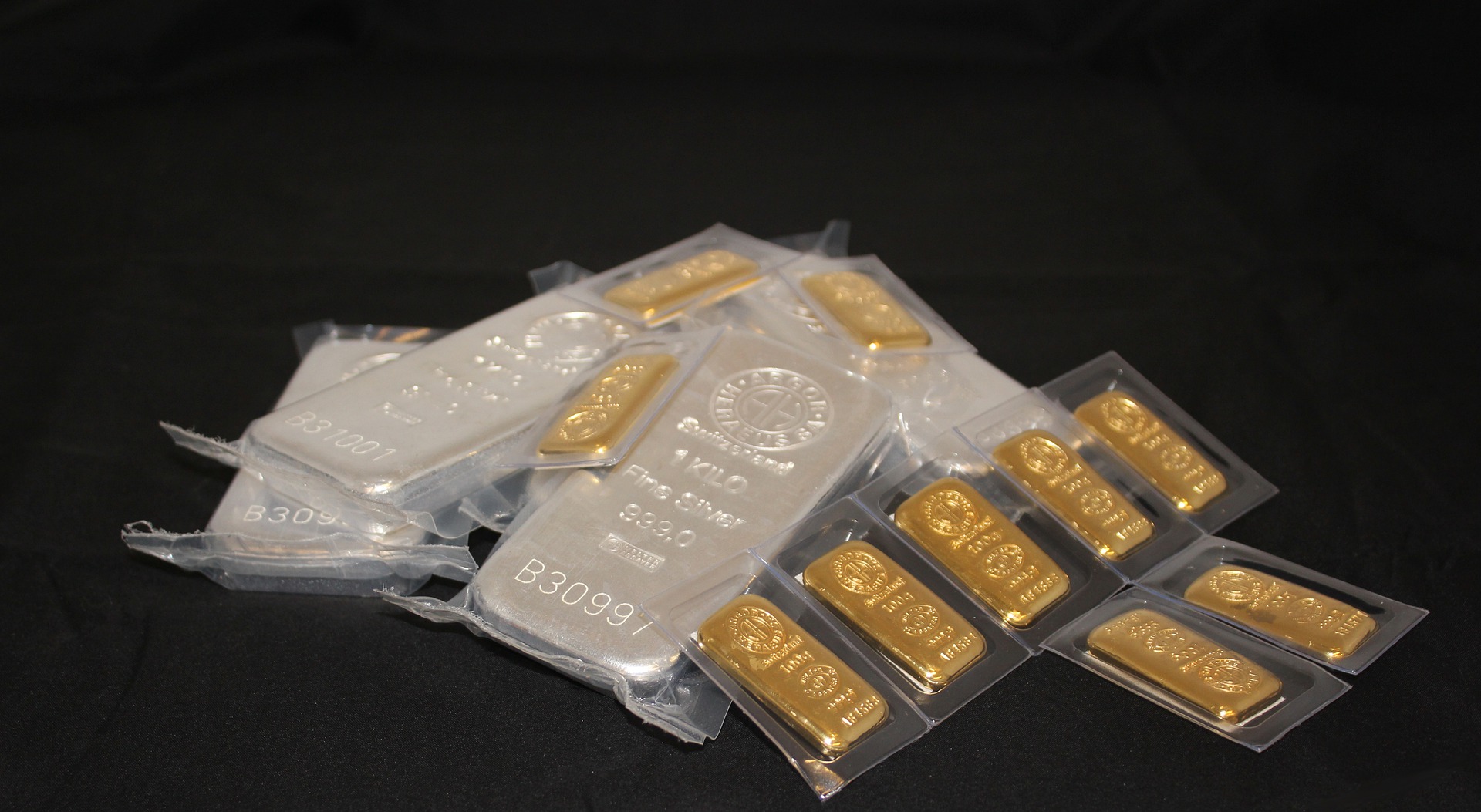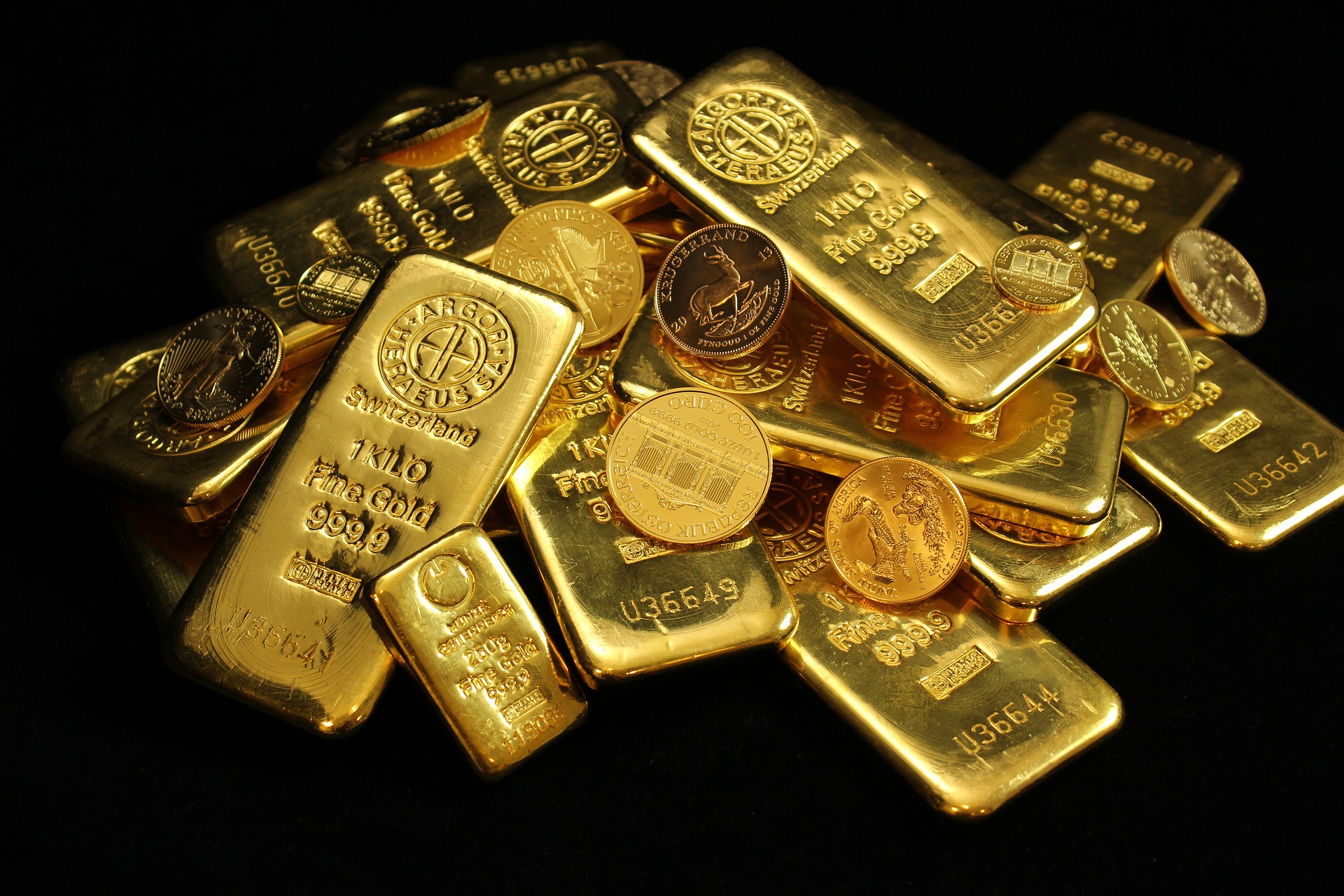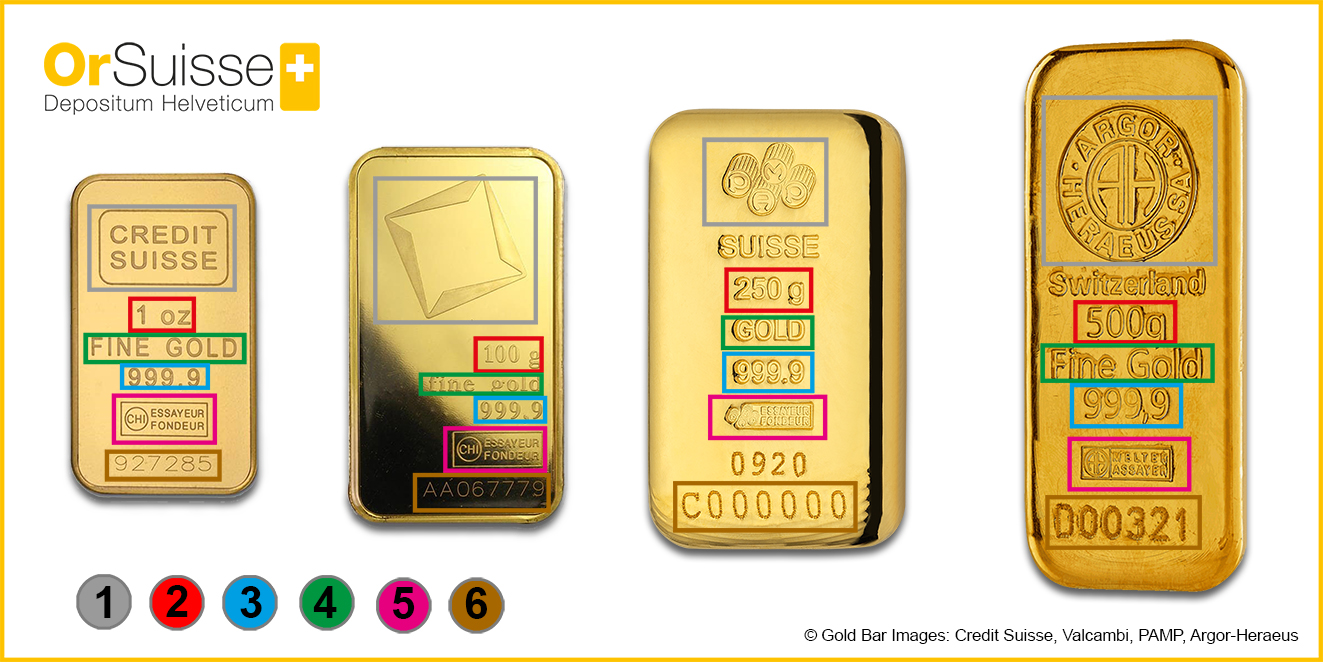A background guide to precious metal coins and bars
Further information » Precious metal bars & coins: the basic essentials
- 11 minutes read
Good basic knowledge is an essential prerequisite for successful wealth creation via precious metals. Newcomers especially should know the meaning of technical terms, understand the importance of fineness and denominations, and appreciate the properties and features of different bars and coins. This will ensure each product acquisition performs as required and meets individual expectations.
This article is intended to provide an insight into the world of physical precious metals and highlight the special features that must be taken into account. It explains the differences between the metals and their various formats, and also provides answers to questions about where gold or silver should be purchased, and how these products are best stored.

Precious metals acquired for asset protection
There are different ways to invest in precious metals. In addition to jewellery and mounted precious stones, high-quality bars and coins created specifically for asset-protection purposes are a particularly suitable method. These goods are primarily gold or silver products – platinum and palladium options are also available, but potential investors will require a higher level of specialist knowledge. In addition, there is a much smaller range of available products made from these ‘grey’ metals.
Although gold can be used in the medical field and is also used in a few industrial areas, this valuable metal is mainly used to make jewellery and products serving the capital investment market. The situation is rather different for the ‘white’ metals – silver, platinum and palladium – which are primarily used for industrial purposes. The same also applies to copper, rhodium, rare earths, and precious metal granules.
Why fineness is important
An important characteristic of all bars and coins is their fineness – in other words, the proportion of real metal in any particular product. Nowadays, high-quality products are made from almost 100% real gold or silver. This attribute is relatively easy to quantify because, just like pieces of jewellery, coins or bars usually have an indication of their fineness actually embossed on the surface of the product. Fineness is expressed in four digits, such as 999.9 parts-per-thousand. Premium products of this fineness are essentially made from pure gold or silver.
However, fineness alone is not always the deciding factor; and there are exceptions. For example, Krugerrands and Sovereign gold coins are among the most popular investment coin products. Yet their gold content is only 91.67 percent. The remainder of each coin consists of copper, which is why these coins have an elegant reddish shimmer. A similar situation arises with the American Eagle gold coin, which appears much brighter thanks to its high silver content.
While gold jewellery is often rated according to carats (each carat being 1/24 by weight), fineness in thousandths is a more important metric for precious metal bars and coins. As the following table shows, each of these values can be easily converted for comparison purposes:
| Fineness in thousandths | Carat equivalent (kt) | Percentage | Use |
| 333/1000 | 8 kt | 33,3 % | Jewellery |
| 375/1000 | 9 kt | 37,5 % | Jewellery |
| 417/1000 | 10 kt | 41,7 % | Jewellery |
| 585/1000 | 14 kt | 58,5 % | Jewellery |
| 750/1000 | 18 kt | 75,0 % | Jewellery / dental gold |
| 835/1000 | 20 kt | 83,5 % | Dental gold |
| 875/1000 | 21 kt | 87,5 % | Jewellery |
| 916,66/1000 | 22 kt | 91,6 % | Jewellery, coins |
| 999/1000 | 24 kt | 99,9 % | Jewellery, bars, coins |
Differentiation via denominations and weights
In addition to fineness itself, the denomination is also an important distinguishing feature. Simply put, bars and coins are not only available in different versions, but also in different sizes or units of measurement. These are based on the weight of a coin or bar. This information is usually found on each respective product and expressed in grams or kilograms, as well as in troy ounces. The fine weight can differ from the coarse weight (total weight) if other metals are mixed in (see the Krugerrand or American Eagle above).
One troy ounce of gold, silver, platinum or palladium equates to exactly 31.103468 grams. This unit of weight corresponds to the apothecary ounce, from which it was originally derived. It also serves as the measurement base for the standard bars state central banks use to secure capital. However, these large bars are not suitable for private gold buyers – a standard gold bar weighs 400 ounces (12 kilograms) would cost around 700,000 Swiss francs, while a standard silver bar of 1,000 ounces (31 kilograms) would be worth around 20,000 Swiss francs.
Precious metal bars are also available in standard weight units from 0.5 grams up to 15 kilograms. Ounce denominations are available too, so there is a suitable size available for every requirement. Gold bars weighing 100 or 250 grams are just as popular as silver bars weighing 500 grams or one kilogram. The situation with precious metal coins is much the same. Here, the one ounce (oz) denomination defines the most commonly traded size, while many other units are also available on the market (e.g. 1/10, 1/4, 1/2, 2, 5 oz; or 1 kg and 5 kg).
Investment-status gold enjoys special advantages
For gold to be described as investment gold, it must meet certain criteria. Gold bars, for instance, must have a fineness of at least 995/1000. And if gold coins are to be recognised as investment gold, they too are subject to additional requirements. Their fineness must be at least 900/1000. Furthermore, they must be, or must once have been, recognised as legal tender in the respective issuing country. In most cases a coin’s nominal value appears on the coin face. In the EU, they also must also have been minted after 1800, and the selling price of these so-called bullion coins is restricted to a maximum of 80% above their gold value.
Buy VAT-free silver from our authorized dealers!
Echtgeld AG in Switzerland:
Victoreanum eG. in Germany:
Classic gold coins include the Britannia, Chinese Panda, Helvetia, Australian Kangaroo, Maple Leaf, Vreneli and Vienna Philharmonic. Historical gold coins minted prior to 1800 also have a high value, but, by definition in the EU, are not recognised as investment gold. This distinction is important because gold coins suitable for capital security can be purchased free of VAT, while antique gold coins are subject to VAT at the full rate in the EU.

Investment silver subject to VAT – with some exemptions
Those wishing to use silver to secure their assets should realise that the purchase of silver coins and bars is always subject to VAT. There are no exceptions on grounds of fineness or vintage for this white metal, nor indeed for platinum or palladium. The VAT rate in Switzerland is 8.1% as from January 2024. Even so, this is still significantly cheaper than in the rest of Europe, where VAT is charged at 17-25%.
However, there is one simple way to save VAT on silver: If purchased silver goods are immediately stored direct in a Swiss duty-free warehouse, then the purchase itself will be VAT-exempt. This method of buying silver ex-VAT allows investors to make full use of their available investment capital.
Minted or cast: Creating precious metal bars
The production of precious metal bars generally involves one of two different processes. The method is chosen, regardless of whether gold, silver or some other type of precious metal bars are produced. Bars weighing up to around 150 grams are minted after being punched out of a prefabricated sheet of the chosen metal. However a casting process is more likely to be the method used when bars of 250 grams or more are required. Here, gold or silver granules are generally melted in a furnace at very high temperatures. The molten liquid precious metal is then poured off into special moulds where it is left to cool and form solid blocks. This processing also requires special punches as described below.
Motifs and coin bars
The particular manufacturing process used to create precious metal bars is a crucial feature which determines the final appearance of the bars. Unlike cast ingots which are made via a much coarser production process, minted ingots have precise shapes and a surface which looks smoother and altogether more elegant. As a result, minted bars weighing up to around 150 grams are also more likely to carry more decorative and detailed motifs on their surface. These designs are carefully cut into the stamps used to create the blocks. Besides their investment potential, these attractively presented minted bars also appeal to the collector market.
Coin bars are a special format created via these production methods. They have the typical rectangular bar shape and also feature a circular coin emblem which displays an official face value. As such, this means that, unlike classic investment bars, they are recognised as an official means of payment in the issuing country.
Other special bars
For added appeal, and to increase the choice of options, some minted bars are commercially available in special shapes. Gold tablet bars are one example: As the name suggests, these are gold plates weighing one gram, which are interconnected, but made with predetermined breaking points – rather like a chocolate bar. Such bars can either be sold complete, or sold off in smaller sections. In Switzerland, these bars are issued by Valcambi and called CombiBars. The Heraeus MultiDisk uses a similar idea and features a dispenser containing individual one-gram pieces which can be removed separately.
Elsewhere, Argor-Heraeus brought their first kinebars to the market in 1994. At first glance they look much like classic embossed bars. However, kinebars have one special feature which can be seen on the back. They have a full-surface embossed hologram that shimmers in a variety of radiant colours according to the angle at which they catch the light. This ‘kinegram’ is a security feature intended to deter would-be counterfeiters. Hologram bars are available in various units from one gram up to one ounce.
The coveted LBMA certification
Novice investors in particular can find it hard to keep track of multiple market offers and may struggle to accurately assess the quality of precious metals. This is where LBMA certification can help. The London Bullion Market Association is the largest exchange-independent trading venue for precious metals, and producers wishing to sell their bars or coins via this route will need the LBMA’s certificate of approval to do so. Once approved, they are registered on the organisation’s publicly accessible Good Delivery List, which is constantly updated.
To qualify for LBMA certification, precious metal bars must comply with the so-called Good Delivery Standard, which defines precise technical data such as dimensions, weight and fineness. Furthermore, all precious-metal goods must have clear markings. You can learn more about this in the next section.
While certified manufacturers primarily produce large bars for banks and other institutional clients, they also produce an extensive range of commercially available bars and coins for private investors. This means all kinds of buyers can rely on the quality of products supplied by LBMA-certified providers.
Gold bars and their markings
But just how can investors readily identify certified bars, especially since the LBMA issue no corresponding seal of quality? Firstly, remember that an approved manufacturer must always be listed on the LBMA’s publically accessible Good Delivery List. Secondly, don’t forget that LBMA approval obliges manufacturers to clearly label each of their products. To satisfy this requirement, precious metal bars in particular must display certain embossed data and hallmarks on their surface. The logo of the manufacturer or distributor is placed centrally, while the hallmark of the inspector or smelter also occupies a prominent position. There will also be further information concerning the exact weight and the precious metal used, plus information about its fineness to the nearest four digits. The origin of each precious metal bar can be traced at any time via its clearly assigned serial number.

| 1 | Manufacturer logo |
| 2 | Unit |
| 3 | Metal |
| 4 | Fineness |
| 5 | Inspector/smelter |
| 6 | Serial number |
Precious metal coins and their complex manufacturing process
In contrast to bars, coins are minted exclusively from punched blanks. These coins always look very impressive thanks to their sheer diversity and the variety of detailed motifs on offer. Special embossing stamps are used to create the finest possible coin images, carefully fashioned by skilled graphic designers. Both surface designs are pressed onto the blanks in one single process, thus instantly creating a coin with two different faces. In addition, some coins also feature tiny laser engravings incorporated into the design to protect against counterfeiting attempts. These privy marks can be found on the Maple Leaf and Krugerrand coins, for example.
The minted quality of precious metal coins will vary according to whether a coin is destined for the investment or collector market. With investor-quality precious metals, the coin blanks are mostly unrefined. This quality of finish is usually referred to as brilliant uncirculated, mint state, or uncirculated. However, coins for specialist coin collectors often feature motifs embossed on pre-polished plates using specially ground stamps to create high-gloss finishes and/or reflective surfaces.
Medals primarily offer commemorative value
Medals also frequently appear on the precious metal coin market. Although they look like investment coins, they have more of a commemorative or souvenir value. In fact, medals are particularly unsuitable for wealth-building because they only have a thin silver or gold coating. Their core material is often nickel or some other non-precious metal. They do not feature a stamped face value, and cannot act as an official national coinage.
Medals often serve as a badge of honour awarded for some particular event. A gold medal weighing 550 grams issued at the Olympic Games has a metal value of around 660 Swiss francs. An Olympic gold medal is actually made from real silver with a real-gold plating of six grams. In comparison, a one-ounce (31.103 g) Krugerrand gold coin is worth around 1,750 Swiss francs, depending on the current gold price.
Certificates of authenticity for coins and bars
Precious metal bars and coins are high-value products constantly subject to a high risk of counterfeiting. In addition to embossed security features, many investor and collector products are now sold together with certificates of authenticity. This additional documentation is often integrated into the original packaging and contains technical information about the fineness, origin, and mintage of the precious metal. Limited editions are often issued with numbered certificates, while classic bars and coins too may also feature such evidence of authenticity.
Bullion coins are also available in larger containers. These can be sealed coin tubes or monster boxes made of plastic which can accommodate up to 500 coins. A certificate is also included as proof of authenticity, which means the goods can then be stored unopened.
Safe storage is very important
Those seeking asset protection should ensure they only purchase genuine precious metals. That’s why experts always recommend only ever purchasing bars or coins from specialist precious metal retailers. In addition to normal, over-the-counter services, many of today’s specialist retailers – such as Echtgeld AG – also conveniently offer their goods via a reputable online shop.
It is also important to store precious metal holdings safely and with appropriate insurance cover. A solid, built-in home safe is one option. Other practical alternatives include a bank safe deposit box, a similar facility with a precious metal trader, or bank-independent storage with a private provider in Switzerland, where gold and silver can be securely stored outside the EU jurisdiction.
OrSuisse negotiable warehouse receipts
If you value the benefit of increased liquidity for your bars and coins, you should take a careful look at what OrSuisse can offer. This private storage specialist can provide clients with internationally tradable warehouse receipts for precious metal holdings stored in individual custody. OrSuisse’s negotiable warehouse receipts have the status of securities and thus make physical precious metal assets much more fungible.
Advice or questions? Please contact us
A summary of the basic essentials of precious metal bars and coins
- In addition to jewellery, bars and coins made of precious metals are considered to be investment products. They are predominantly made from gold and silver. Investing in metals like platinum and palladium requires greater knowledge and expertise.
- Modern investment gold with a fineness of at least 900/1000 can be purchased ex-VAT from specialist retailers.
- Silver products often have a fineness of 999/1000 and can be purchased VAT-inclusive from retailers. Silver can be purchased without VAT provided it is immediately stored in a Swiss duty-free warehouse.
- Bars and coins are available in different quantities in both grams and ounces. One troy ounce of gold or silver is equivalent to around 31.103 grams.
- LBMA-certified manufacturers can be relied upon to supply high-quality precious metals whose quality and origin can be checked at any time.
- Investment ingots are either cast or minted and always clearly marked. Coin production involves a complex minting process.
- While precious metal coins can always be used to secure assets, commemorative medals usually only have their own intrinsic value.
- Bars or coins are best obtained from brick-and-mortar retailers, or via their respective online presence. Safe storage is essential to maintain the value of holdings. Bank-independent individual custody in Switzerland is available at OrSuisse and includes the benefit of negotiable warehouse receipts.
